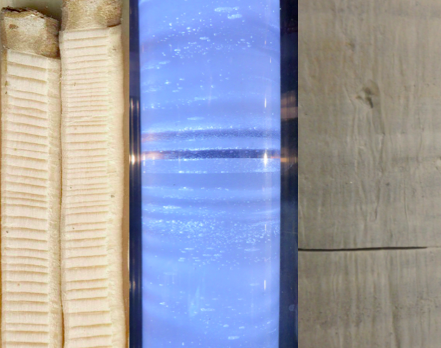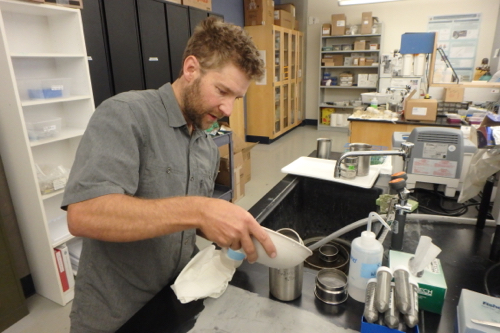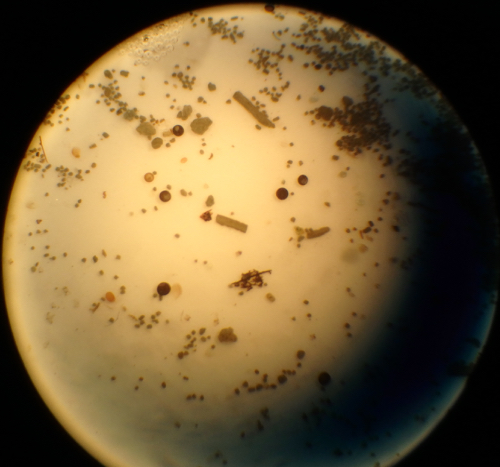This is the fifth journal in a series of posts explaining the science of our expedition.
"Varve" is a word I hadn't heard before joining the Arctic Glacial Lakes project. A varve is an annual layer that is preserved in sediments. You can see a similar pattern of annual banding in ice cores, tree rings, and even coral - distinct patterns show differences between seasons so years can be distinguished. These bands preserve a record of Earth's conditions when they formed.

VarvesAnnual silt and clay couplets preserved in lake and marine sediments that can be used to reconstruct environmental changes. are created from seasonal differences in sediment transport caused by differences in stream flow. In my "Why Study Mud" journal, I explained that sediment is tiny rock particles. Sediments come in different sizes: sand is the largest (but only 0.05 to 2mm), silt is 0.002-0.05mm, and clay is tiny at <0.002mm. It takes more force to move larger sediments. Imagine trying to move a fist sized rock. You could easily pick it up, and could throw it pretty far. Now imagine moving a boulder. It takes too much force to move the boulder by yourself! In streams, the force that moves sediments comes from flowing water. Fast flows exert more force and move larger sediments than slow moving water.

As you may know from your home, streams and rivers have different flows during different times of year. In the Arctic, streams have very low flow in winter when all the water is frozen. In the summer, glaciers and snow melts, so streams have higher flow and move larger sediments. When the stream, filled with sediments, flows into a lake, sediments settle on the lake bottom. Seasonal variation in stream flow, changing the size of deposited sediment, creates varves.
Lake Peters is an excellent location for preserved varves. To preserve them, the lake bottom must be undisturbed. Arctic lakes stay frozen for most of the year (September to May), so have few burrowing organisms that could mix up the layers. Lake Peters is also very deep (60ft), so the bottom of the lake isn't disturbed by surface water flowing in. As a result, layers remain distinct. In addition, only a little sediment is deposited in Arctic Lakes each year. Only about 1-2mm of sediment is deposited annually in Lake Peters, meaning a meter of core could hold information for over 1000 years of our past!
VarvesAnnual silt and clay couplets preserved in lake and marine sediments that can be used to reconstruct environmental changes. hold a record of historical stream flow and sedimentation, which reveals past climate, but other records of the past can be found in them as well. Tiny bits of plant matter are mixed with deposited sediments, and they can be radiocarbon dated to confirm the age of each varve. Pollen is deposited in each layer as well, and can be identified to reveal how the plants have changed over time. And changes in the chemistry of algae skeletons in each layer can give clues to composition of the atmosphere at the time it was growing and photosynthesizing.


To examine varves, a coring tube is dropped from a boat. The coring tube sinks into the deep mud at the bottom of the lake, then the tube is hauled back up with the mud inside. The sediment cores are brought back to the lab and analyzed for all of the information about the past that its varves hold.


Comments